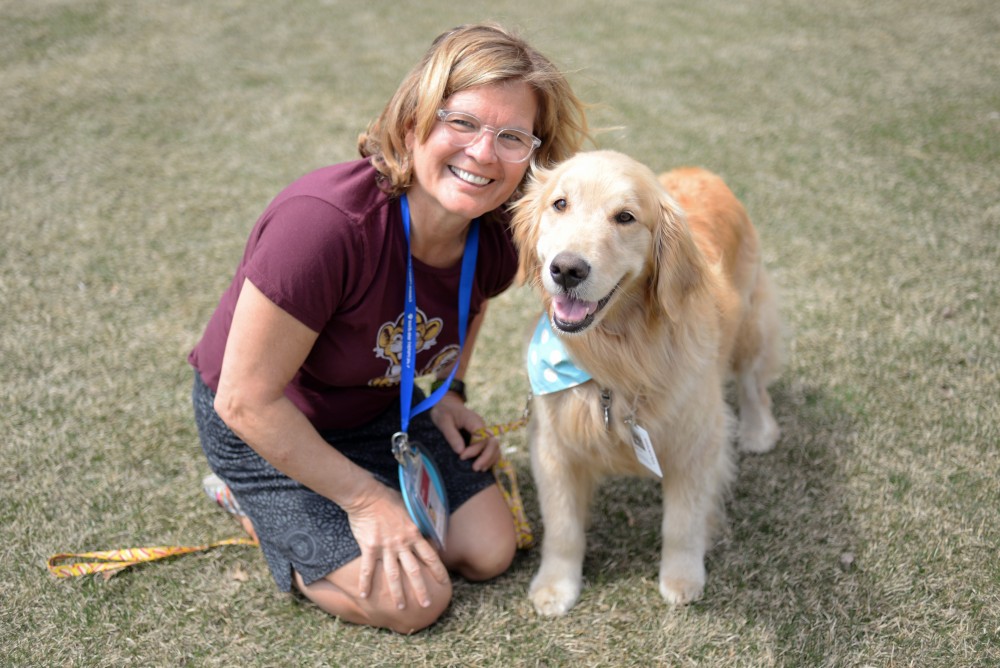University of Minnesota hospitals hope more four-legged friends will walk their halls as patients and visitors increasingly seek therapy dogs for support.
Therapy dogs are in high demand as people learn about the benefits of their support. Many patients say they feel better after they interact with the dogs; however, some say more scientific research is needed to prove the animals have a positive effect.
“We absolutely need more research and better research,” said Tanya Bailey, animal-assisted interactions coordinator for Boynton Health and founder of Pet Away Worry and Stress. “The flip to that coin is if this impacts one person … that’s worth it to me.”

People’s love for therapy dogs keeps them in high demand. However, evidence of their effectiveness is mostly anecdotal, said Carol Ouhl, therapy dog department head for Twin Cities Obedience Training Club.
Bailey the therapy dog, who has worked at the University for three years, visits the school up to five times per week. She brings support and joy to patients and students who make special trips to visit her. She has gathered a social media following on campus and frequents the Medical Center, PAWS and surrounding elementary schools.
Holly Parker, Bailey’s owner, has seen the University’s demand for therapy animals increase in past years. University entities like PAWS and the University Medical Center are constantly looking for more handlers and animals, she said.
Students are frequent users of therapy animals, Tanya Bailey said.
“For most students, when they come to campus, they leave behind their entire network of social support. They will say that coming here to campus, they miss their animals the most,” Tanya Bailey said.
Many hospital patients seek animal companionship to remind them of home. When Parker visits hospitals with Bailey in tow, she finds the dog brings a familiar face to people who are in a foreign environment, Parker said.
“The staff loves it [too]. We are there for the staff as much as we are for the patients. They need a break too,” she added.
Tanya Bailey has worked with animals for more than 25 years, and has spent much of her career trying to solidify scientific evidence of the benefits of animal therapy.
The disparity between evidence and effect has made it a difficult topic to discuss, she said.
“Do we accept something only if we can quantify it, or do we accept things because one person has had an amazing experience?” Tanya Bailey said.














